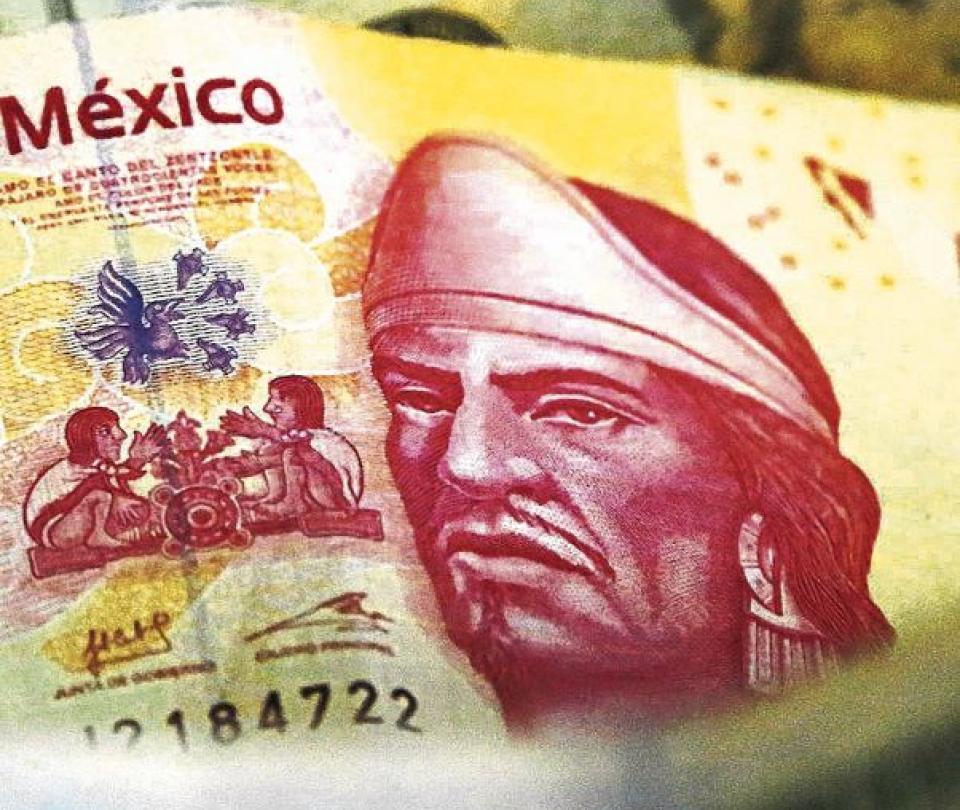The weakness of the dollar and external factors such as remittances and record exports from Mexico boost the Mexican peso, which surprises as the third most appreciated currency this year while other Latin American currencies have hit historic lows, according to analysts consulted by EFE.
(Read: The devaluation would subtract from the collection of the tax, according to the Anif).
While coins like the euro, the pound sterling and the pesos of Chile and Colombia have fallen against the dollarthe Mexican currency is the third with the best performance so far this year, with a positive variation of 3.82% until November 1, the last day in which the Mexican market opened.
The Mexico’s peso is only behind the Russian ruble (17.61%) and the Brazilian real (8.29%), which positions it in second place in Latin America, according to data shared with EFE by Banco Base. Even so, “we cannot speak of a strength of the peso, but rather of a weakness of the US dollar,” said Gabriela Siller, director of Financial Economic Analysis at Banco Base.
The also academic from the Tecnológico de Monterrey pointed out that other factors that have helped the Mexican currency are the inflow of remittances, foreign exchange flows from Mexican exports and foreign direct investment. Until September of this year, remittances added 29 consecutive months with annual historical increases, while exports grew by 25% in the ninth month of 2022.
“In addition, the monetary policy of the Bank of Mexico (Banxico), which has followed in the footsteps of the United States Federal Reserve (Fed), also favors the currency.”, added the specialist. The Mexican peso closed at 19.72 per US dollar on November 1, while on the first day of the year it was trading at 20.53, according to interbank data from the Bank of Mexico.
(Also: Dollar at $5,000: how the historical devaluation of the peso is explained).
Siller added that the price of the Mexican currency could reach 19.5 pesos per dollar if global risk aversion is reduced and the pace of interest rate hikes, and supply chain disruptions are ironed out along with the end of China’s “zero covid-19” policy. Meanwhile, Janneth Quiroz, chief economist at the Monex Financial Group, explained that the peso is a financial asset, so if more dollars enter, this increases supply and the exchange rate remains at the same levels.
The analyst also highlighted that tourism has contributed, especially due to the greater number of foreigners who have moved to Mexico due to new labor trends such as teleworking, which leaves income in dollars.
A lasting trend?
Despite the resistance of the peso, the agency Moody’s Analytics warned last month of an “imminent” depreciation of the peso 20% Mexican against the dollar between 2022 and 2023 by the “monetary tightening” of the Fed in the United States.
(Also: Dollar: Is Colombia the country where the currency is rising the most?).
Quiroz considered that there may be an additional appreciation for the dollar in the following Fed interest rate hikes, since the expectation is that aggressive escalations will decrease.
The expert explained that the feeling of a possible relaxation of the monetary policy “would end up supporting greater demand for these assets“, including the Mexican currency. Quiroz added that some internal factors that would drive a greater inflow of US dollars to Mexico is to maintain “an environment conducive to investment, as well as the main macroeconomic indicators.”
Ignacio Martínez, from the Laboratory of Analysis in Commerce, Economy and Business (Lacen) of the National Autonomous University of Mexico (UNAM), warned that the appreciation of the peso is only due to external factors.
The expert referred that Mexico maintains a certain macroeconomic stability, but enunciated adverse internal factors such as a negative gross fixed investment, the loss of 120,000 jobs in September alone and inflation of 8.53% in the first half of October.
(See: The dollar became a refuge for Argentine pockets).
“So what we have with the peso is not the result of the situation of the domestic market, but of macroeconomic stability, mainly as a result of these indicators that foreign currency enters the country as remittances and exports.“, he concluded.
EFE








![[Img #74675]](https://thelatestnews.world/wp-content/uploads/2024/12/They-discover-a-new-class-of-X-ray-sources-in-the-150x150.jpg)



